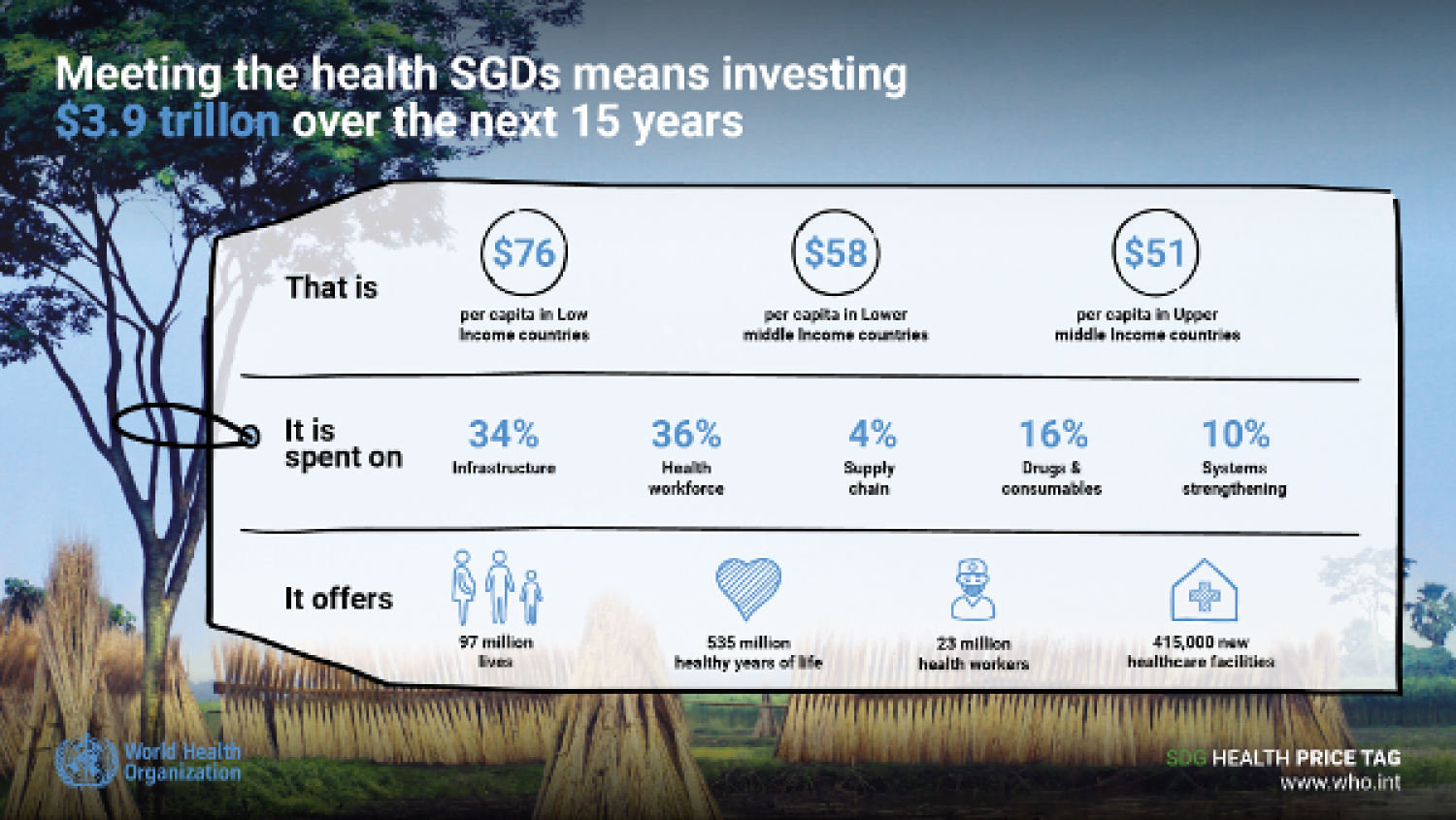
Elsevier, The Lancet Global Health, Volume 5, September 2017
Background The ambitious development agenda of the Sustainable Development Goals (SDGs) requires substantial investments across several sectors, including for SDG 3 (healthy lives and wellbeing). No estimates of the additional resources needed to strengthen comprehensive health service delivery towards the attainment of SDG 3 and universal health coverage in low-income and middle-income countries have been published. Methods We developed a framework for health systems strengthening, within which population-level and individual-level health service coverage is gradually scaled up over time. We developed projections for 67 low-income and middle-income countries from 2016 to 2030, representing 95% of the total population in low-income and middle-income countries. We considered four service delivery platforms, and modelled two scenarios with differing levels of ambition: a progress scenario, in which countries' advancement towards global targets is constrained by their health system's assumed absorptive capacity, and an ambitious scenario, in which most countries attain the global targets. We estimated the associated costs and health effects, including reduced prevalence of illness, lives saved, and increases in life expectancy. We projected available funding by country and year, taking into account economic growth and anticipated allocation towards the health sector, to allow for an analysis of affordability and financial sustainability. Findings We estimate that an additional $274 billion spending on health is needed per year by 2030 to make progress towards the SDG 3 targets (progress scenario), whereas US$371 billion would be needed to reach health system targets in the ambitious scenario—the equivalent of an additional $41 (range 15–102) or $58 (22–167) per person, respectively, by the final years of scale-up. In the ambitious scenario, total health-care spending would increase to a population-weighted mean of $271 per person (range 74–984) across country contexts, and the share of gross domestic product spent on health would increase to a mean of 7·5% (2·1–20·5). Around 75% of costs are for health systems, with health workforce and infrastructure (including medical equipment) as the main cost drivers. Despite projected increases in health spending, a financing gap of $20–54 billion per year is projected. Should funds be made available and used as planned, the ambitious scenario would save 97 million lives and significantly increase life expectancy by 3·1–8·4 years, depending on the country profile. Interpretation All countries will need to strengthen investments in health systems to expand service provision in order to reach SDG 3 health targets, but even the poorest can reach some level of universality. In view of anticipated resource constraints, each country will need to prioritise equitably, plan strategically, and cost realistically its own path towards SDG 3 and universal health coverage. Funding WHO.
